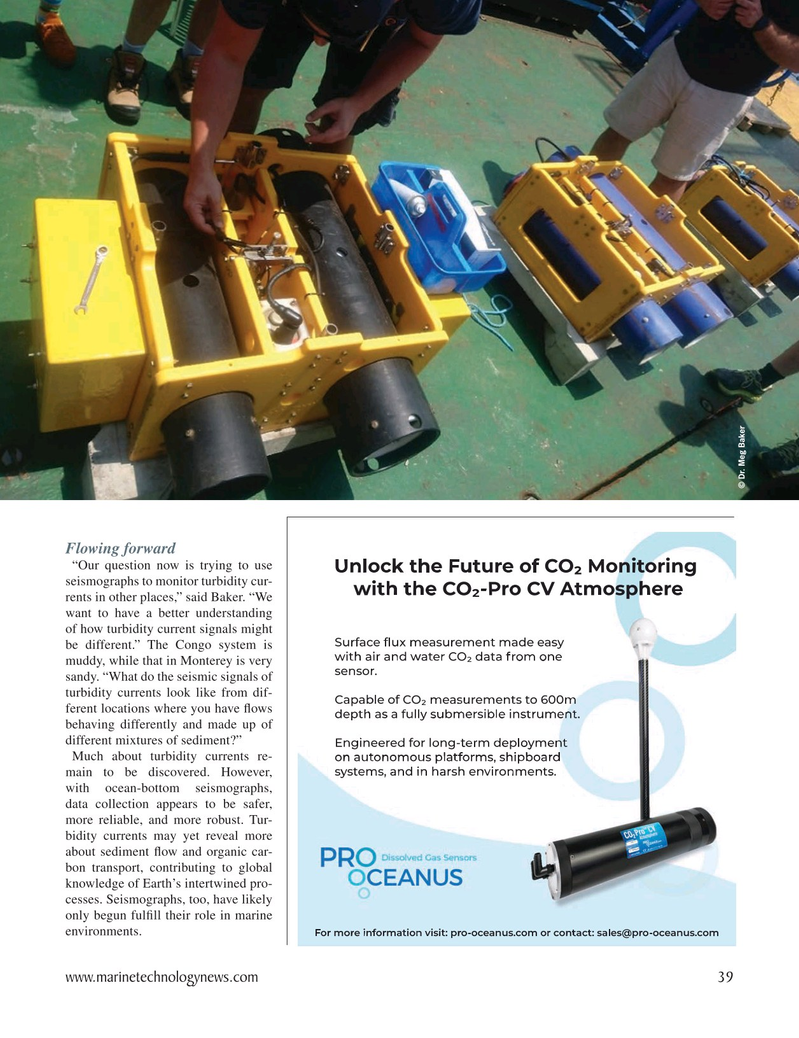
Page 39: of Marine Technology Magazine (March 2025)
Read this page in Pdf, Flash or Html5 edition of March 2025 Marine Technology Magazine
© Dr. Meg Baker
Flowing forward “Our question now is trying to use seismographs to monitor turbidity cur- rents in other places,” said Baker. “We want to have a better understanding of how turbidity current signals might be different.” The Congo system is muddy, while that in Monterey is very sandy. “What do the seismic signals of turbidity currents look like from dif- ferent locations where you have ? ows behaving differently and made up of different mixtures of sediment?”
Much about turbidity currents re- main to be discovered. However, with ocean-bottom seismographs, data collection appears to be safer, more reliable, and more robust. Tur- bidity currents may yet reveal more about sediment ? ow and organic car- bon transport, contributing to global knowledge of Earth’s intertwined pro- cesses. Seismographs, too, have likely only begun ful? ll their role in marine environments. www.marinetechnologynews.com 39
MTR #3 (34-49).indd 39 3/13/2025 11:48:35 AM

 38
38

 40
40
